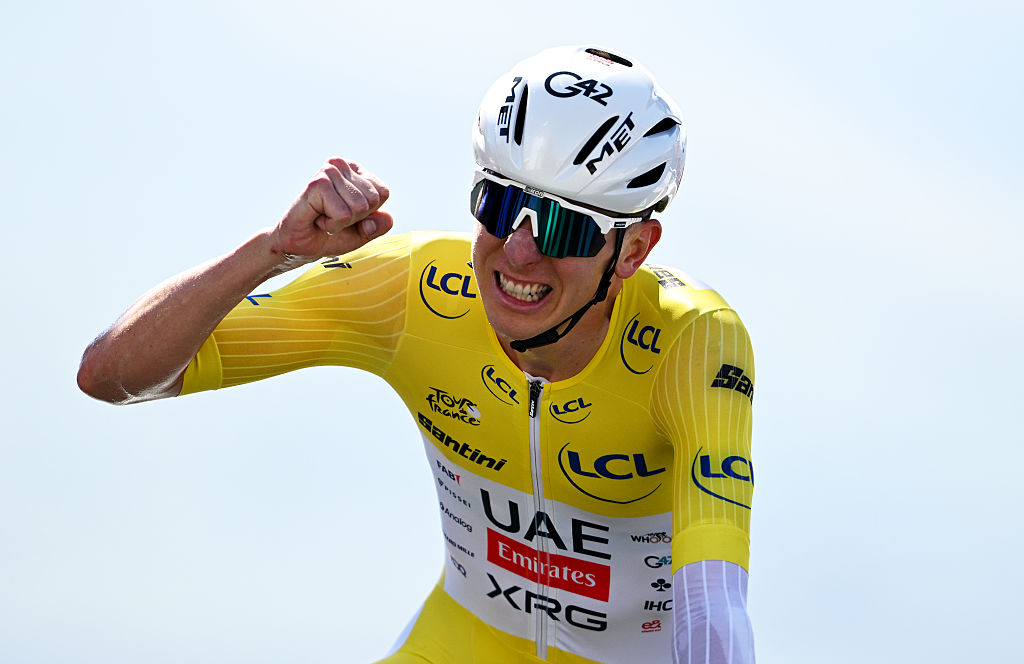Best clipless pedals 2025: Options for on and off-road use
Our pick of the best clipless pedals for road and gravel to use in 2025
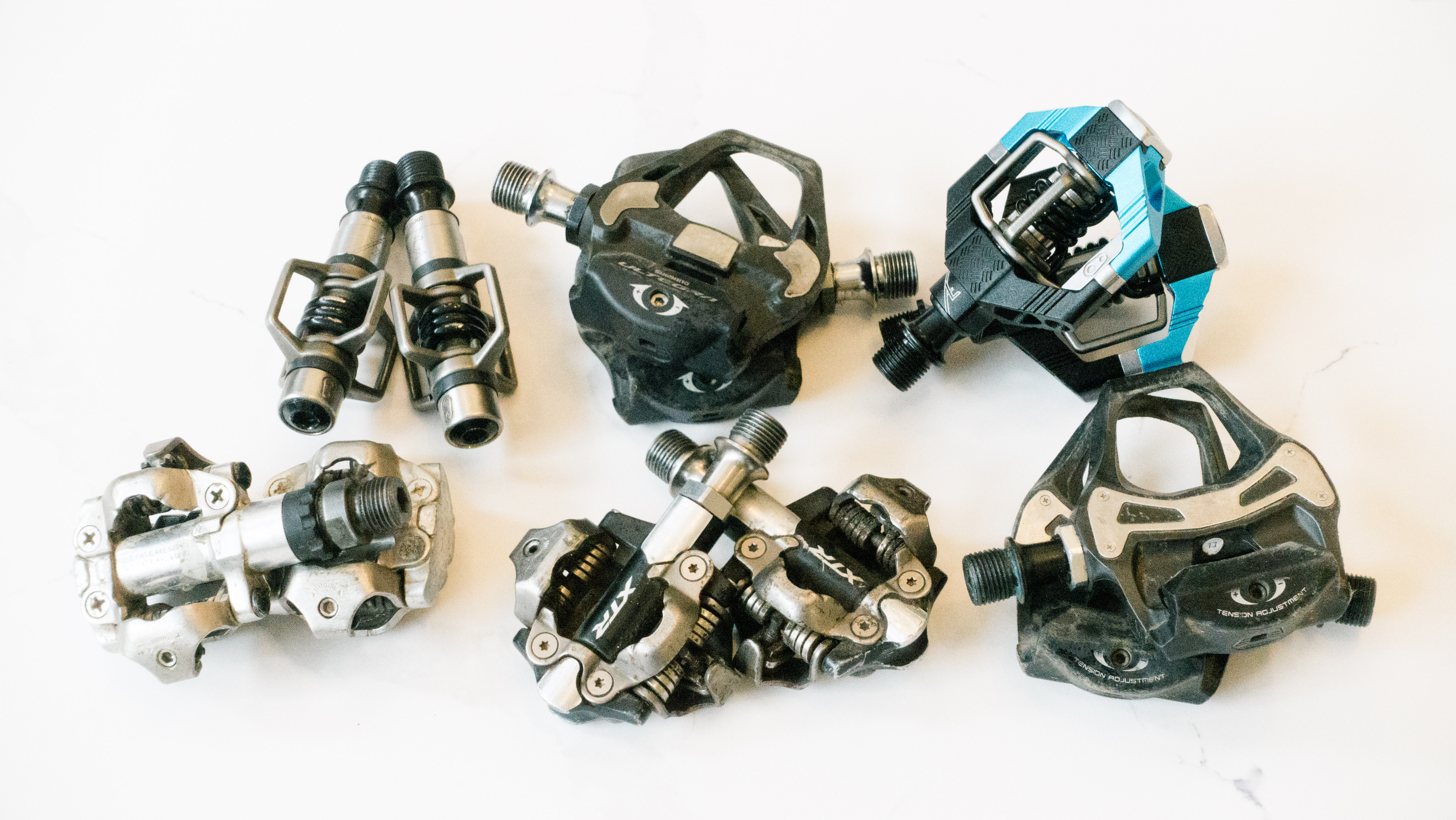
The best clipless pedals will increase your pedalling efficiency, power transfer and comfort. Typically, road cyclists use clipless pedals while commuters tend to prefer flat pedals to be able to put a foot down more easily. Clipless pedals are also popular with gravel riders, while mountain bikers are more evenly split between clipless and flat pedals.
So, should you choose two-bolt or three-bolt cleats? The best road bike pedals use three-bolt cleats that are larger, protruding below the shoe’s sole, and use single-sided pedals designed for maximum power transfer on the road. Meanwhile, the best gravel bike pedals use a smaller two-bolt cleat that's recessed into the shoe’s sole and is usually paired with double-sided pedals. The pedal choice will also dictate whether you choose the best road cycling shoes or gravel bike shoes to pair them with.
Ultimately, the best clipless pedals are the ones that align with your riding style, cleat compatibility and whether you prioritise power transfer or walkability. To simplify things, this guide is split into two sections: the best clipless pedals for road bikes and the best clipless pedals for gravel bikes.
We have tested a total of 17 clipless pedals from eight different manufacturers in both on-road and off-road conditions. If you're still unsure of what the best clipless pedal for you after reading, feel free to check out our How To Choose and FAQ sections at the end of the guide.
So without further ado, here are our picks for the best clipless pedals in 2025...
Best clipless pedals for road bikes

➕ Solid and stable pedalling platform
➕ Easy tension adjustment
➖ Cleat adjustment can be fiddly
➖ Lighter alternatives are available
The Shimano 105 pedal offers a carbon body at a very affordable price and includes much of the tech of the top-spec Dura-Ace pedal.
It has a similar adjustable retainer spring and a wide platform for foot stability. Its bearings are easy to service and the steel plates at the top of the body ensure longevity. The only real advantage Dura-Ace and Ultegra have over the 105 is their lighter weight.
Read more in our Shimano 105 pedal review.
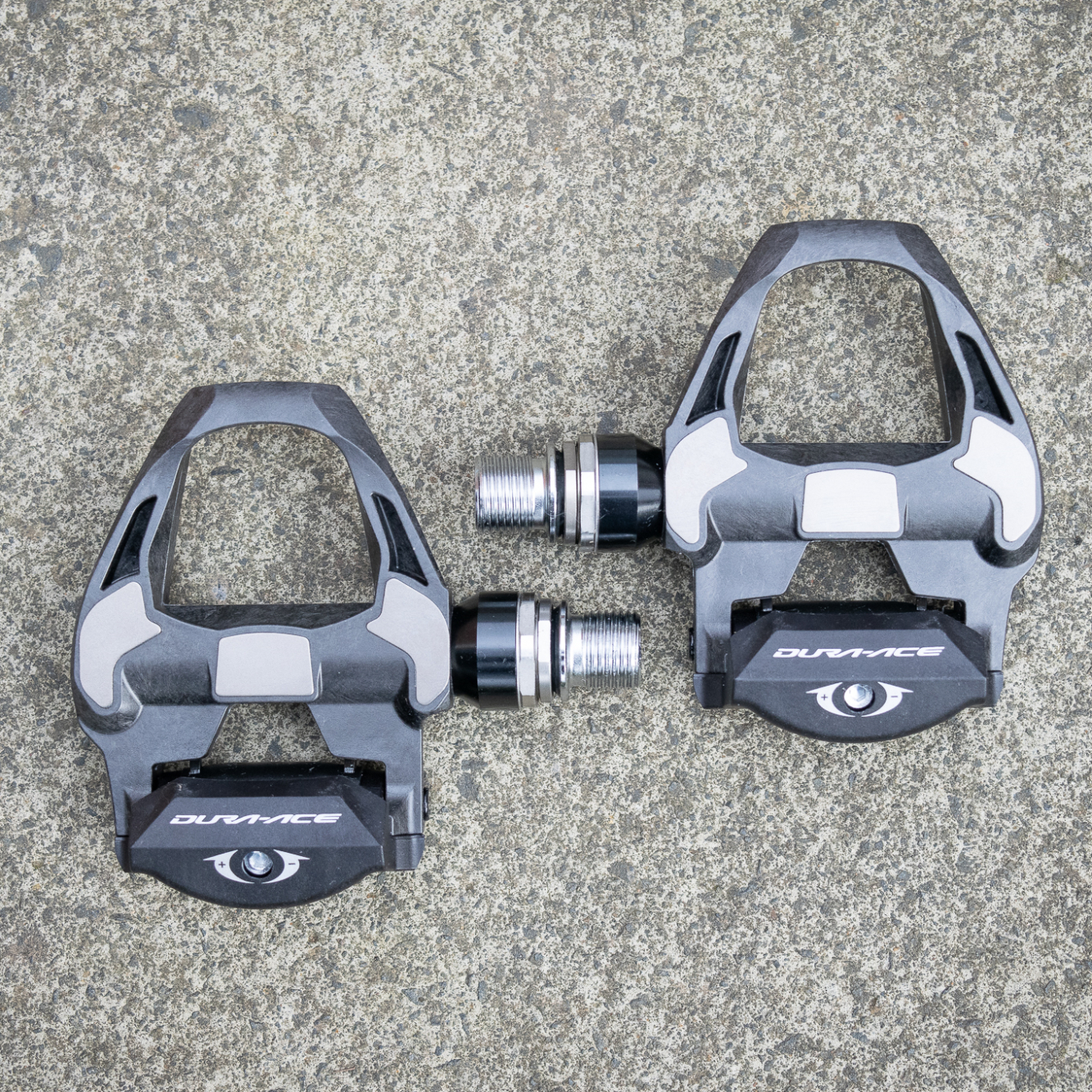
➕ Perfect balance means they're easy to clip in
➕ Worldwide availability of spares
➖ High price (although regularly discounted)
If you want Shimano's top pedal tech, the Dura-Ace pedals include features not found in the 105 or Ultegra. The outboard main bearing lowers the stack height and increases the bearing separation for a more even load distribution.
Unlike the 105, Dura-Ace offers a 4mm longer spindle version for greater stance width (also available in Ultegra). Plus, at 238g for the pair, they are 22g lighter than the 105 too.
Read more in our Shimano Dura-Ace pedal review.
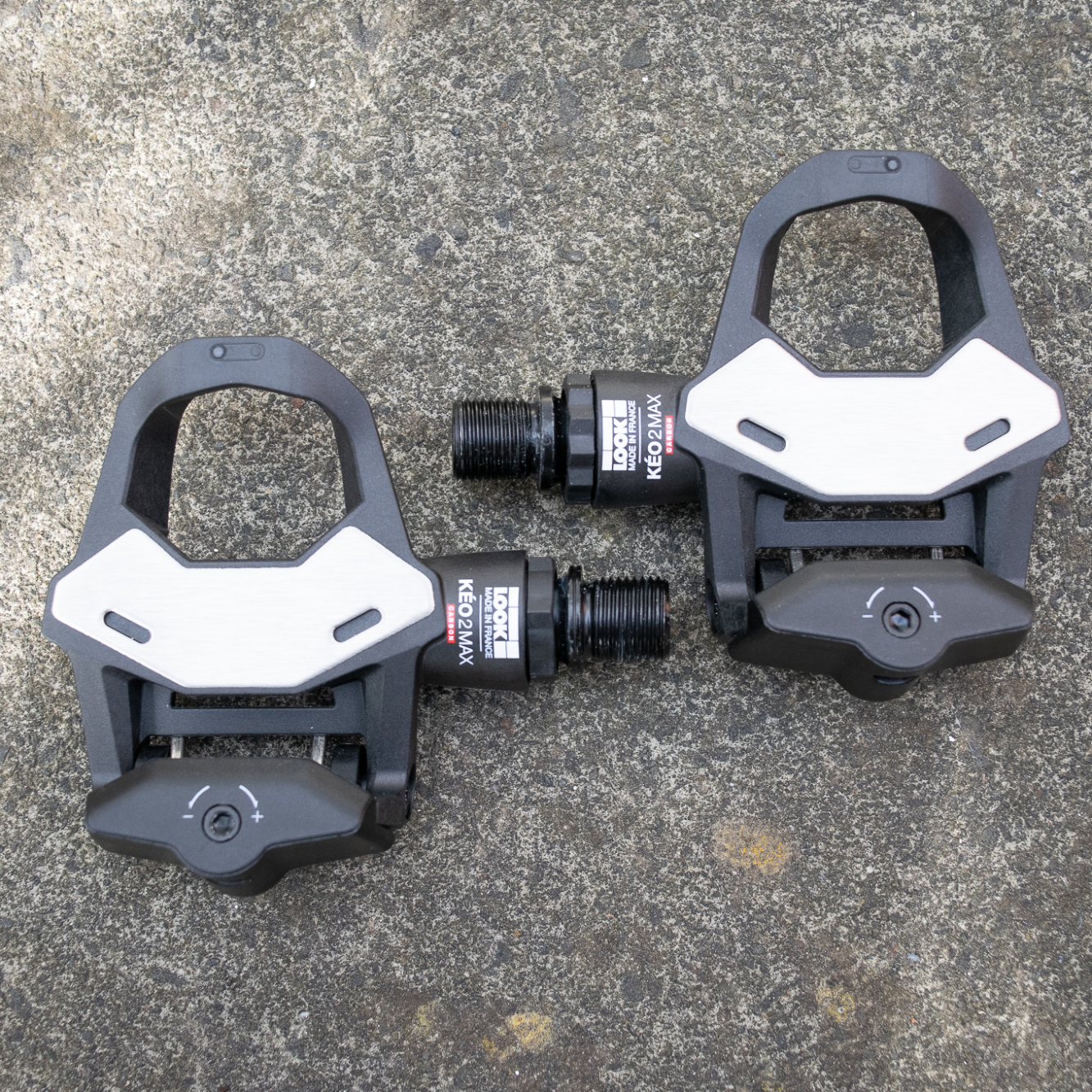
➕ Lightweight carbon design
➕ Competitively priced
➖ Cleats wore faster than rivals
➖ Bearing play
The Keo 2 Max Carbon is at the top of Look's spring-tensioned pedal range, featuring a 250g a set weight that matches Shimano Ultegra. It has a full carbon body and a large engagement surface thanks to the wide steel plate mid-pedal. Even some of the pros can be seen using this pedal and its durability and serviceability are on par with Shimano.
Read more in our Look Keo 2 Max Carbon pedal review.
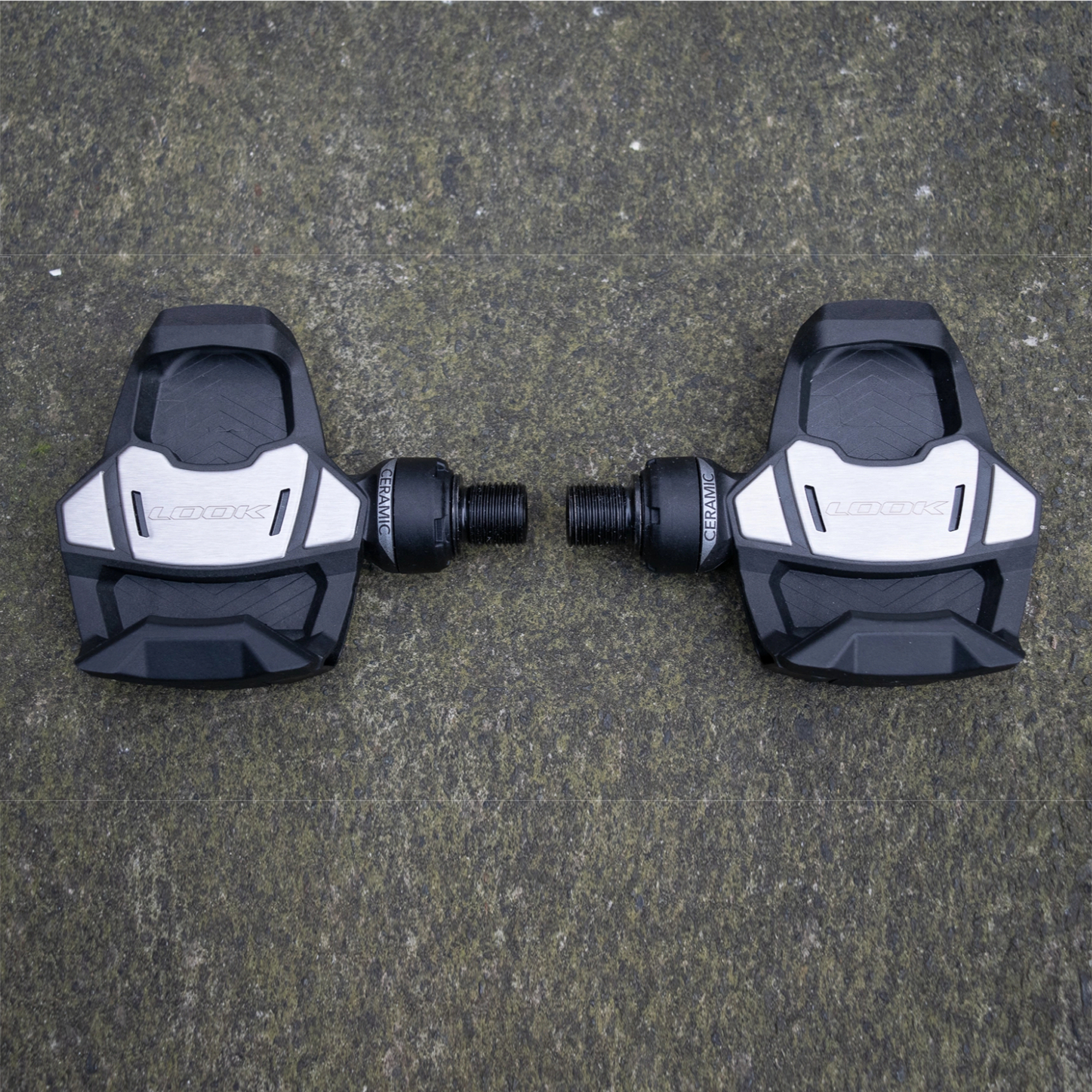
➕ Lightweight
➕ Wide availability of replacement cleats
➖ Cleats can make noise
➖ Adjusting tension can be fiddly
The Keo Blade pedals received an update in 2024, making them more aero. The carbon leaf spring helps to lower the weight to 232g a set. This Ceramic version has a chromo spindle, but you can upgrade to titanium to drop even more weight. As its name suggests, the bearings are ceramic, although there is also a steel bearing option.
Read more in our Look Keo Blade Power pedal review.

➕ Low stack height
➕ Range of adjustment
➖ Requires maintenance to reduce wear
The Zero is one up from the entry-level Speedplay Comp pedals but adds a stainless steel axle and full cleat covers, as well as higher release tension. It's also the only Speedplay pedal offered with multiple spindle lengths. As with all Speedplay pedals, there's extensive adjustability—making the Zero a great choice if you need to fine-tune your stance and leg alignment.
Read more in our Wahoo Speedplay Zero pedal review.
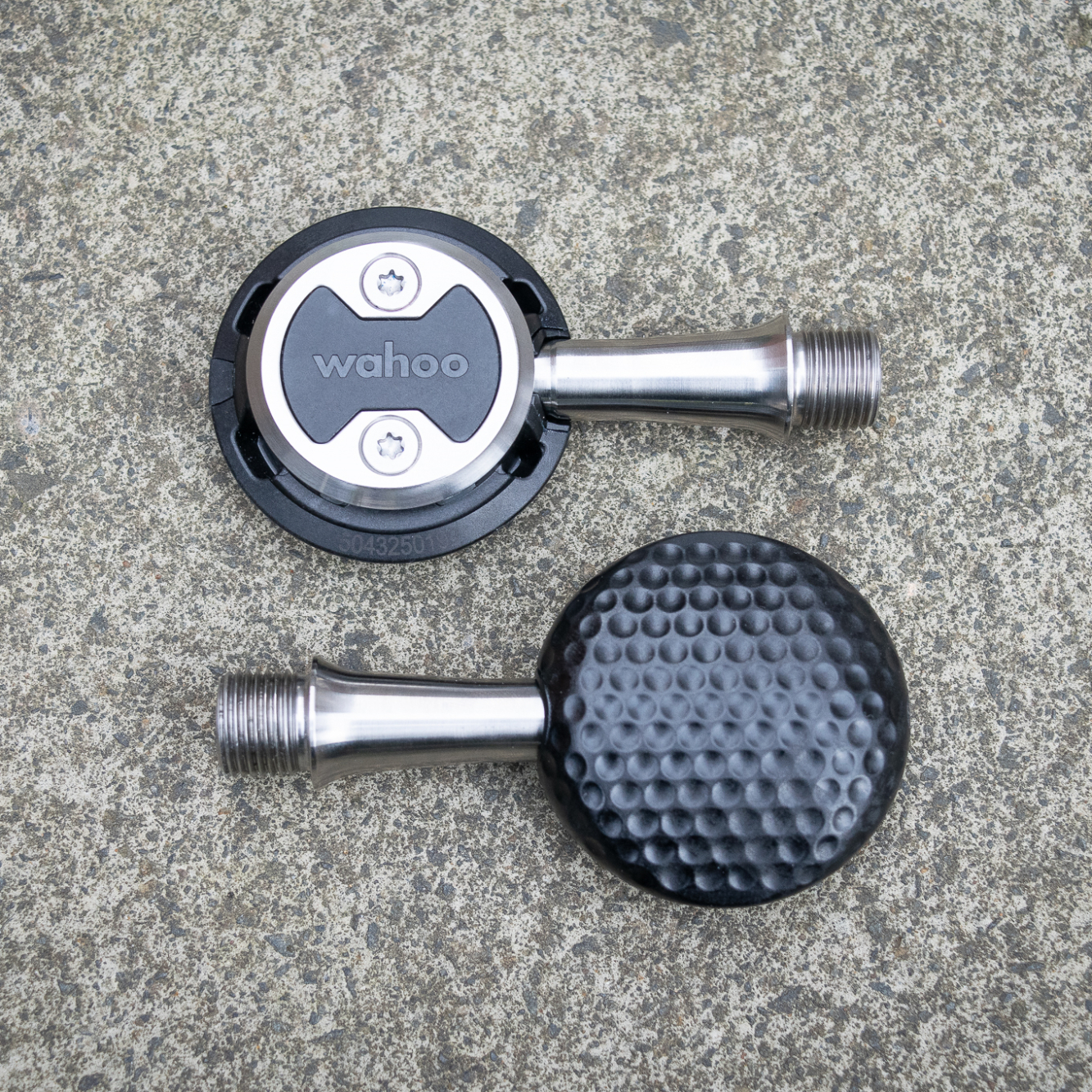
➕ Low stack height
➕ Near infinite float adjustment
➖ Requires maintenance to reduce wear
➖ Minimal performance gains for extra cost
The Speedplay Aero pedals differ from the Zero in offering a one-sided aero-profiled pedal body. This results in a single-sided entry, but other features of the Zero, including low stack height and wide adjustability, are retained. The Speedplay cleat is more awkward to set up and make position adjustments to than other systems though.
Read more in our Wahoo Speedplay Aero pedal review.
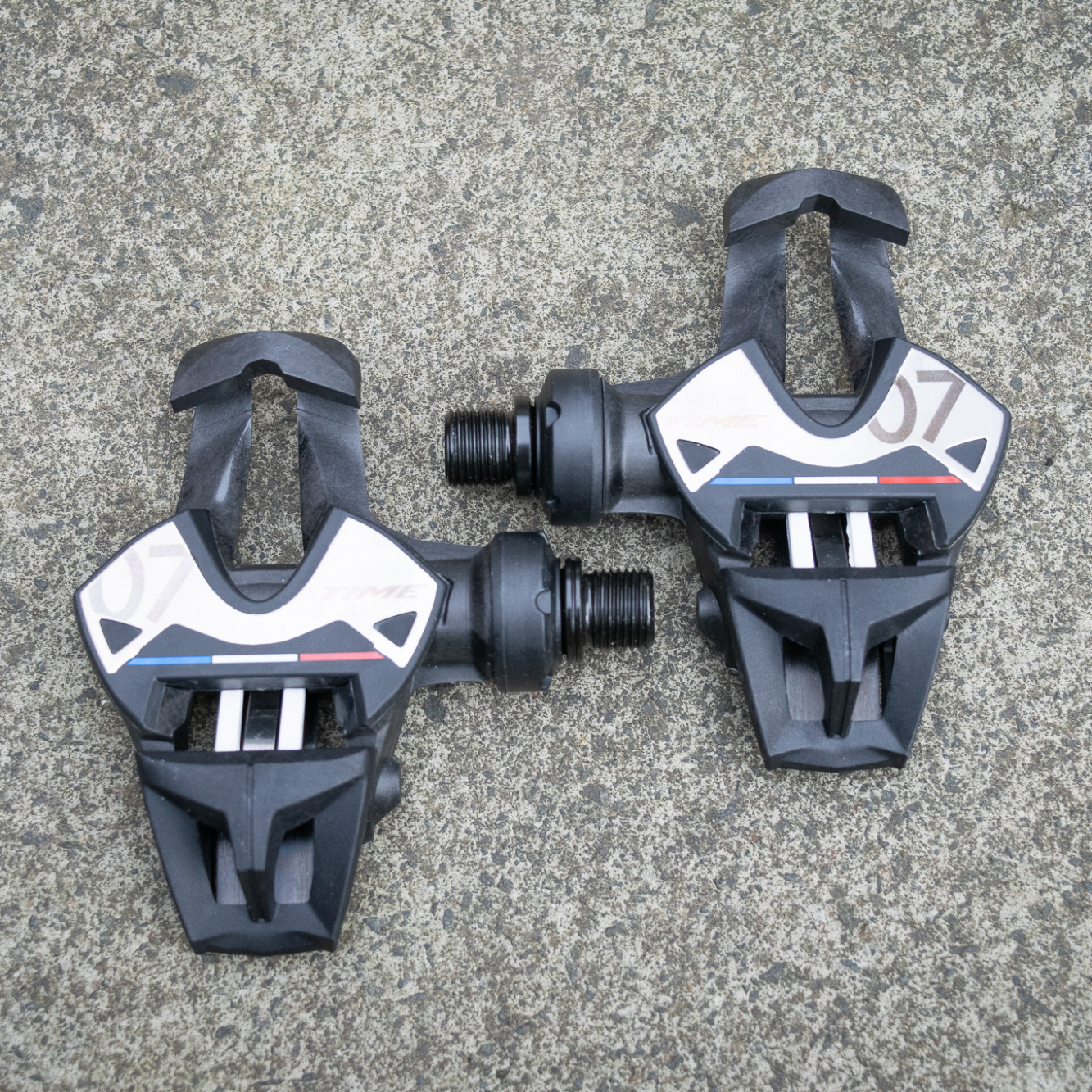
➕ Very lightweight
➕ Fixed cleat option available
➖ Finish feels slightly basic compared to competitors
➖ Sharp edges
The Xpresso 7 is top of Time's lower-priced range but still boasts a carbon body with wide-bearing separation and a wide platform with low stack height, as well as a low 196g a pair weight. The streamlined pedal body offers plenty of support when pedalling, although it has sharp edges to the front and rear retainers.
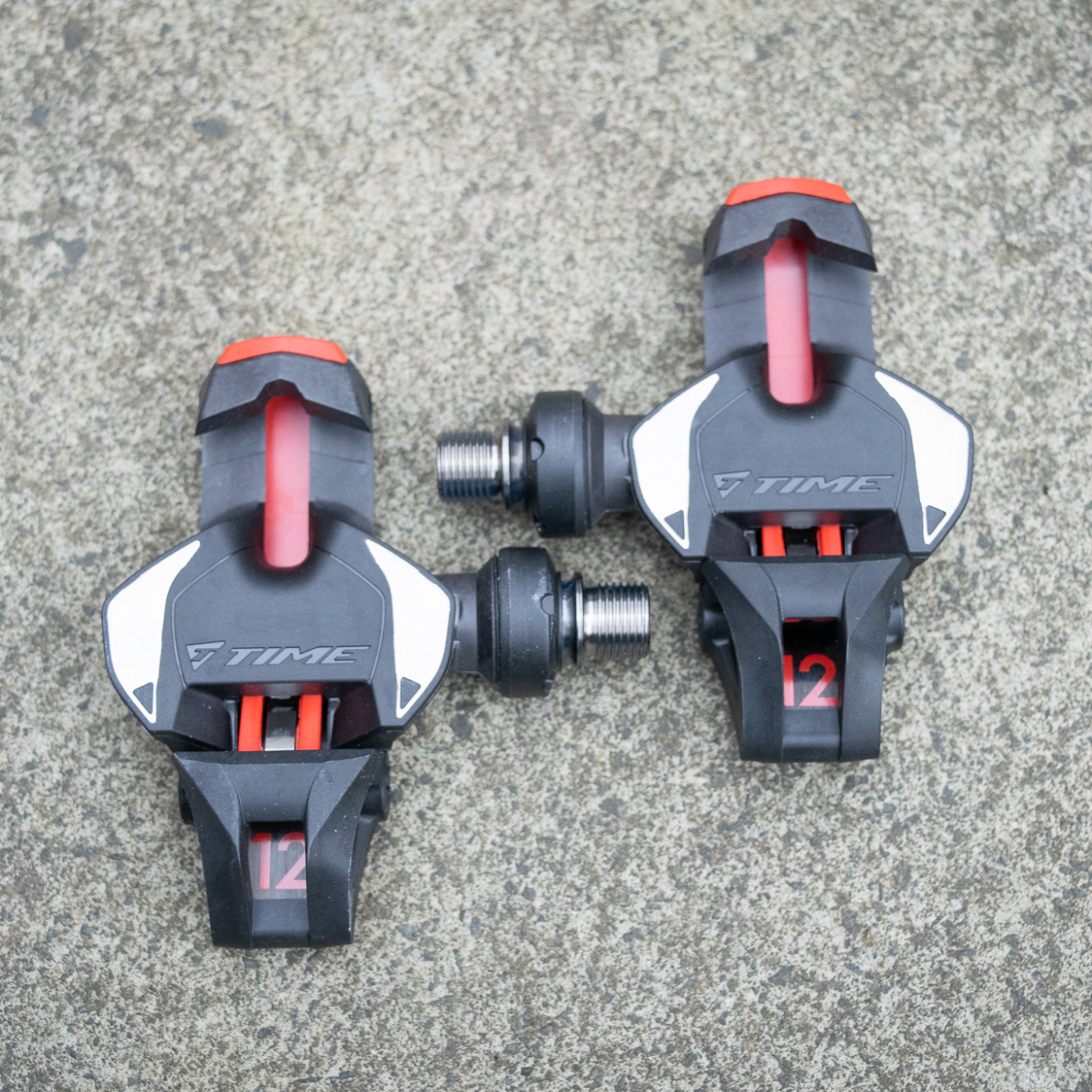
➕ One of the lightest pedal systems
➕ Fixed or floating cleat options
➖ 90kg max rider weight limit
➖ Three tension settings
The mid-range Time Xpro 12 weighs just 183g a pair, making it one of the lightest pedals available. Its narrow, enclosed body should slightly lower your wind profile too. Despite this, the pedal platform spreads out to give good foot support, while the rear retainer has a smooth edge, unlike the Xpresso 7. It uses the same iClic retainer as the Xpresso for easy engagement.
Best clipless pedals for gravel bikes
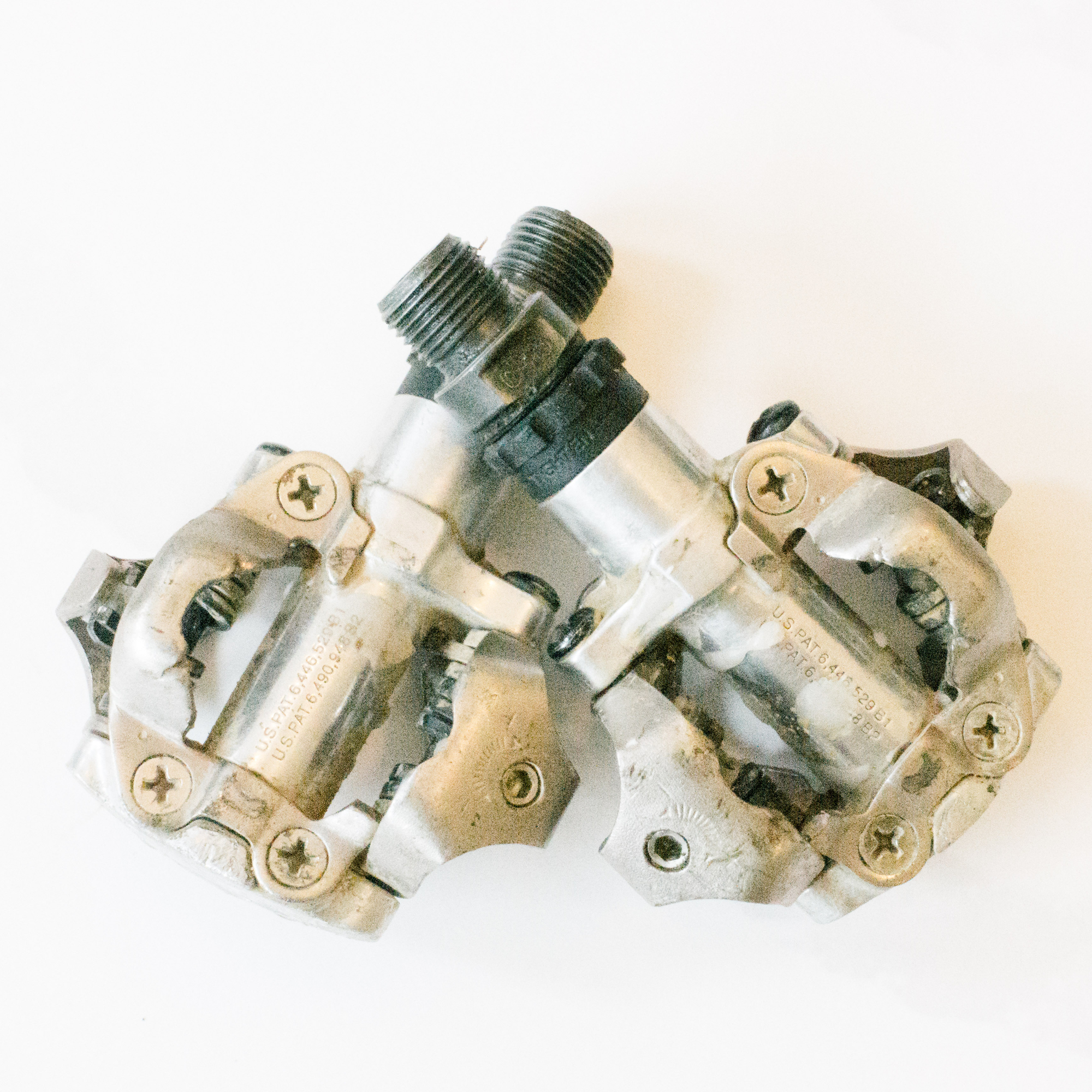
➕ Extremely robust
➕ Excellent value
➖ Heavy
➖ Can be prone to squeaking
The Shimano M520 may be Shimano's entry-level SPD pedal, but it boasts a robust build that should carry you many off-road miles. The skeletal body sheds mud and debris well, there's plenty of adjustability, it's weatherproof and the M520 can be serviced easily. It's a cheap pedal option that will serve for commuting too.
Read our full Shimano M520 pedal review.
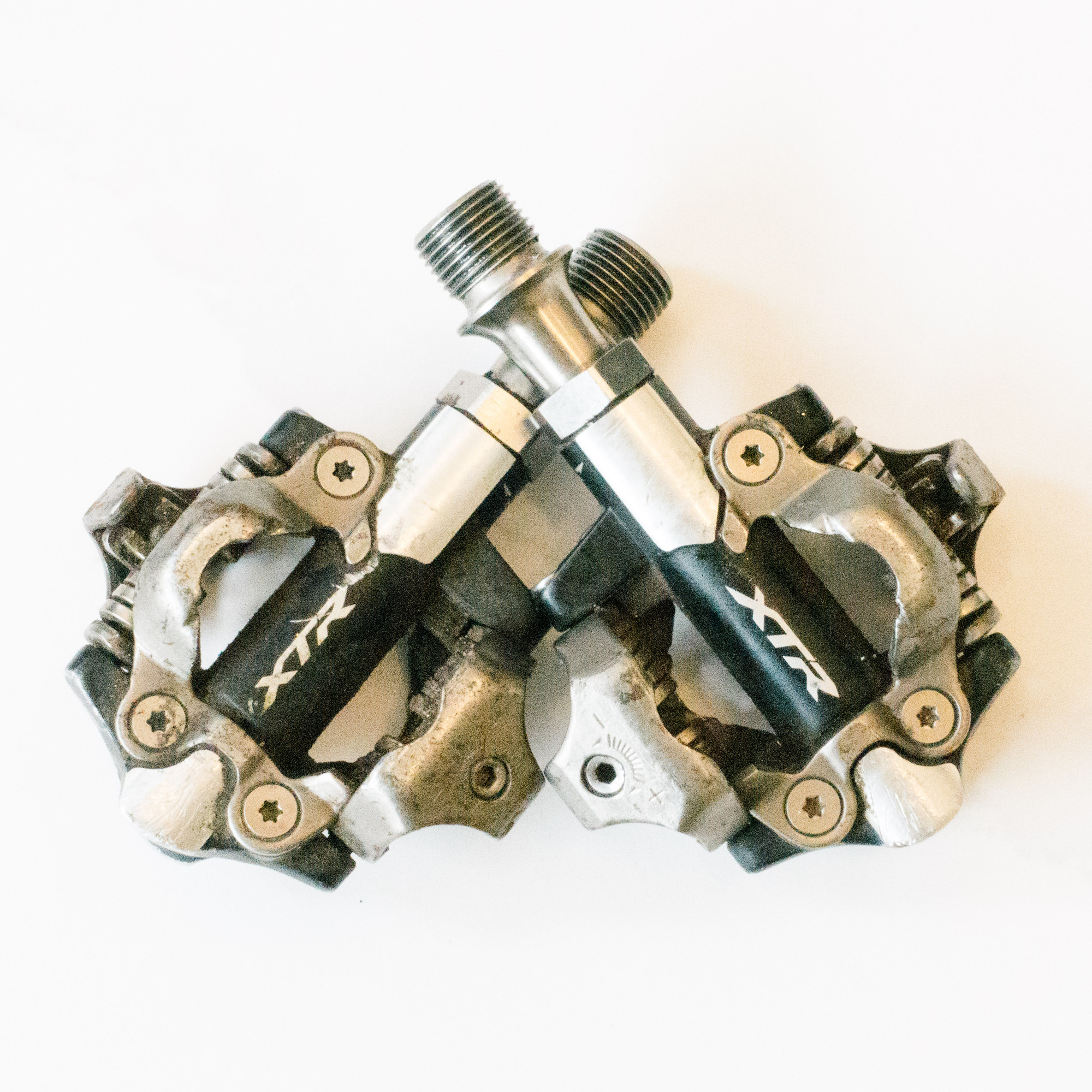
➕ Very durable
➕ Adjustable tension
➖ Low stack height
➖ Not the cheapest option
At the other end of Shimano's SPD pedal range, the top-spec XTR, as with Dura-Ace on the road, offers premium bearings and a lower weight of 310g than Shimano's lower-priced pedals, as well as two-axle length options. The XTR pedal's 15.1mm stack height is lower than the M520, but it retains the same open design for excellent mud shedding.
Read our full Shimano XTR pedal review.
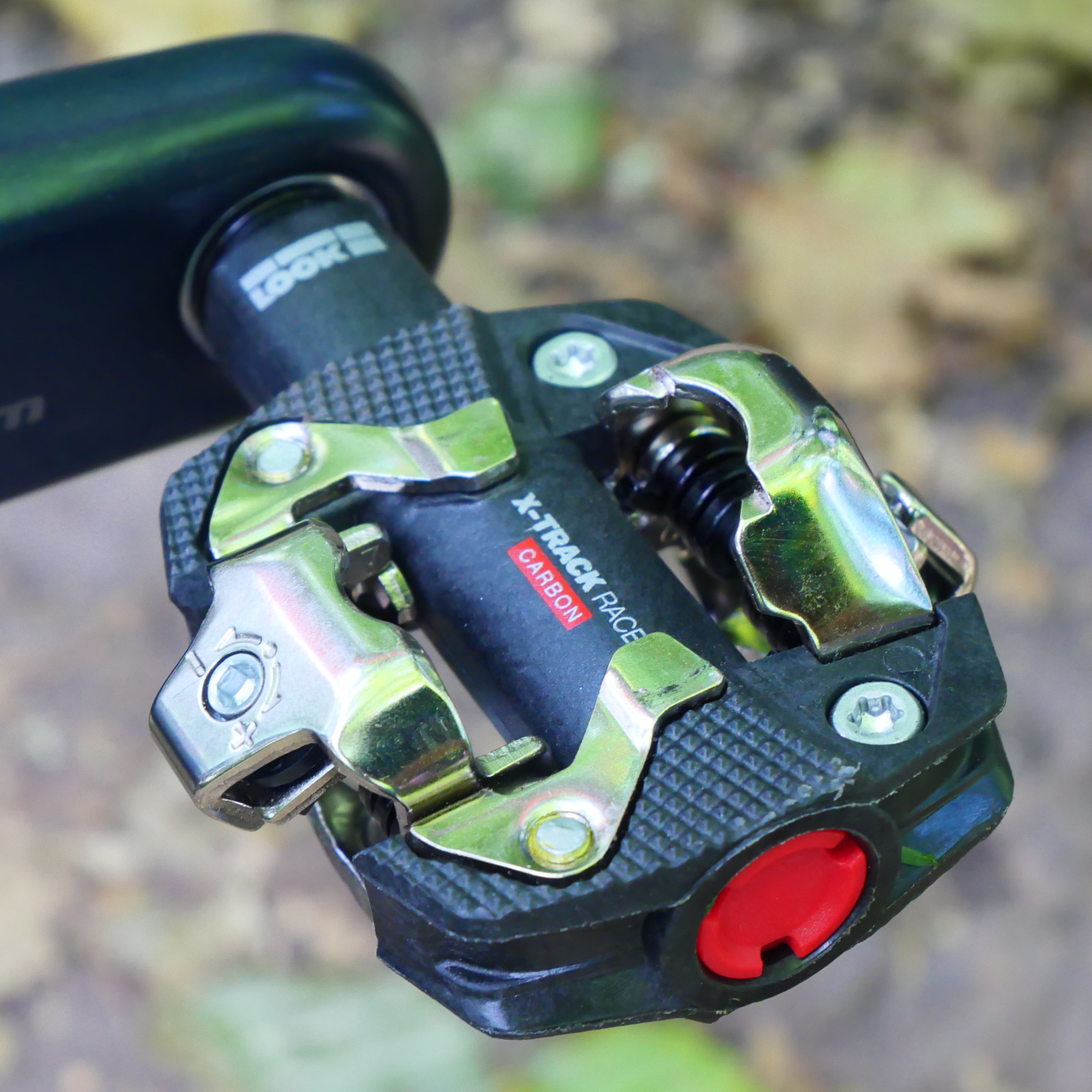
➕ Extra float
➕ Supportive pedal platforms
➖ Need a specific Look tool to service
Look's midrange pedal is positioned to compete directly with Shimano's XT pedal. The X-Track has a wider platform than Shimano's pedals, although the pedal body also has marginally more stack than the equivalent XT pedal. Look's pedals are compatible with Shimano cleats but when used with Look's own cleats, they increase float to 6 degrees, up from Shimano's standard 4 degrees.
Read our full Look X-Track Power pedal review.
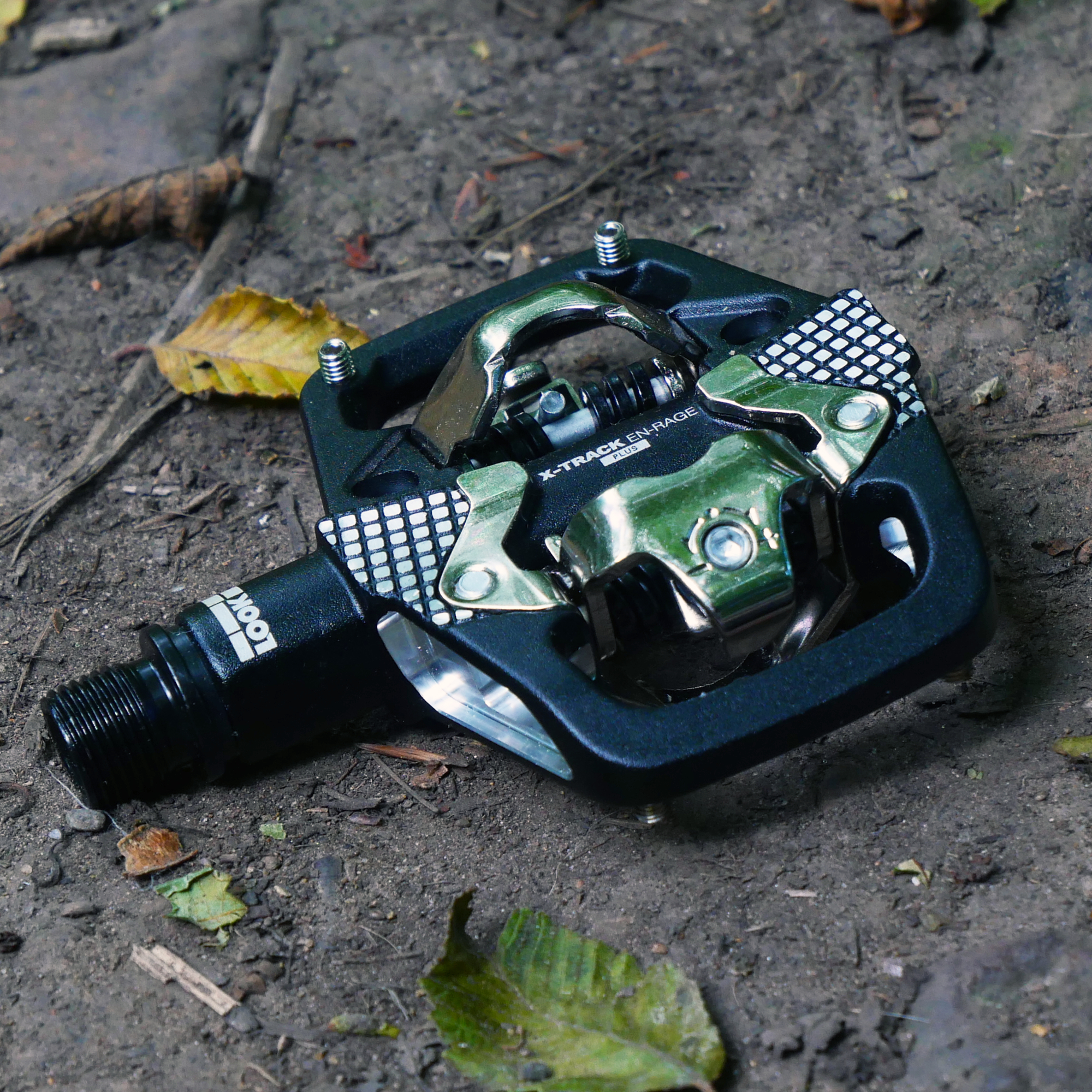
➕ Easy to clip into
➕ Reliable mechanism
➖ Weighty
The X-Track En-Rage pedal offers the same SPD-compatible engagement mechanism, but a larger pedal body and the En-rage Plus adds front pins to that to further improve foot retention. Although geared towards Enduro MTB use, the En-Rage is a good option if your gravel riding is on the more extreme end and you regularly tackle tricky terrain.
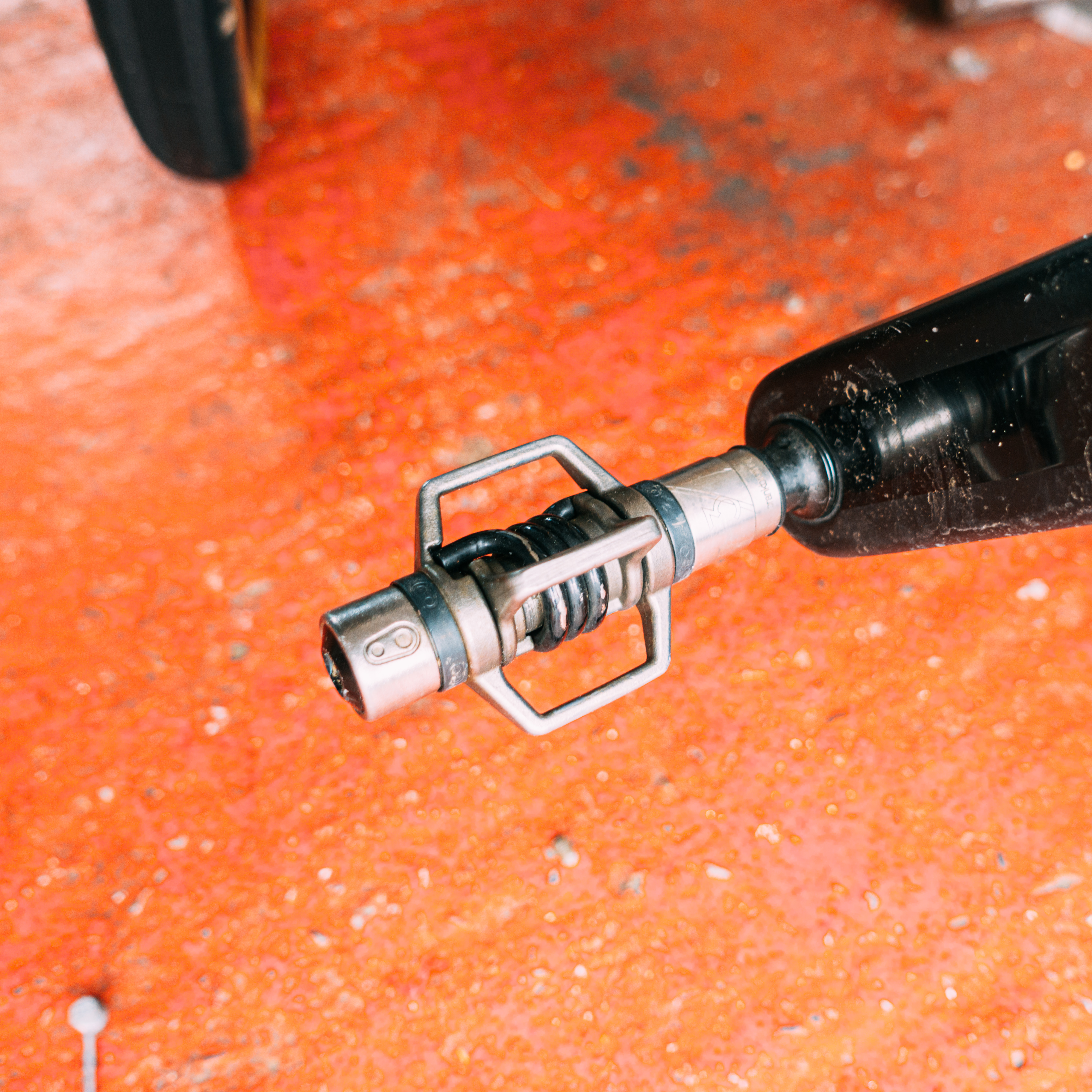
➕ Fantastic mud-shedding
➕ Easy clipping
➖ Lack of platform won't suit everyone
➖ No tension release
Eggbeaters are the minimalist solution for gravel riding. The lack of a platform makes for excellent mud shedding, although it can affect foot stability. The design also gives you four points of engagement rather than two, making quick clipping in that much easier. The four-model range is priced from $60 to $500.
Read more in our guide to the best gravel bike pedals.
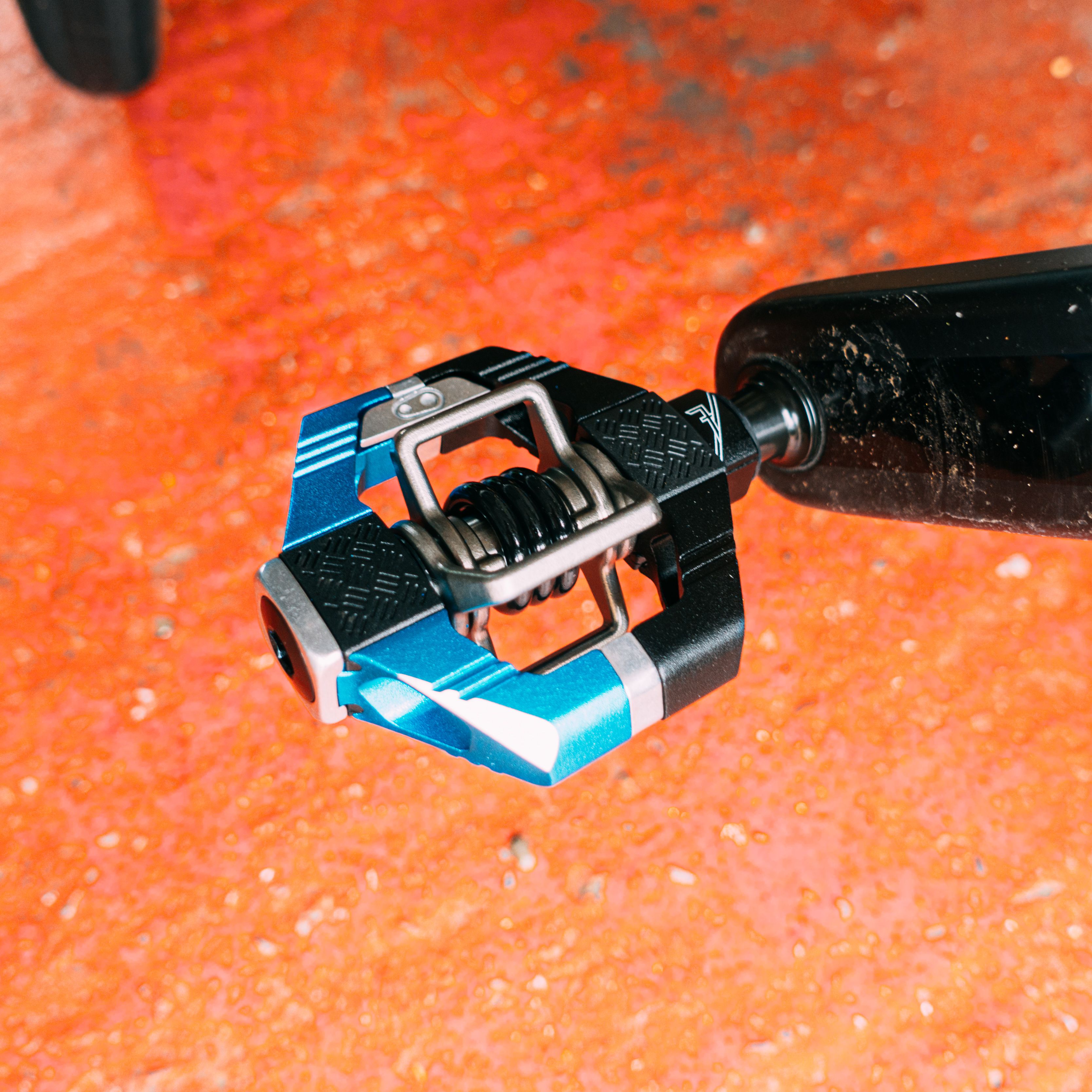
➕ Good for mud
➕ Added platform support
➖ No tension adjustment
If you like the Crankbrothers system but prefer more foot support, the Candy is one of several Crankbrothers designs that add a platform to the retainer. It has the same easy engagement with four points of access and is available in an array of colour options. There's the same wide price range over its four models as with the Eggbeater pedals.
Read our full Crankbrothers Candy 7 pedal review.
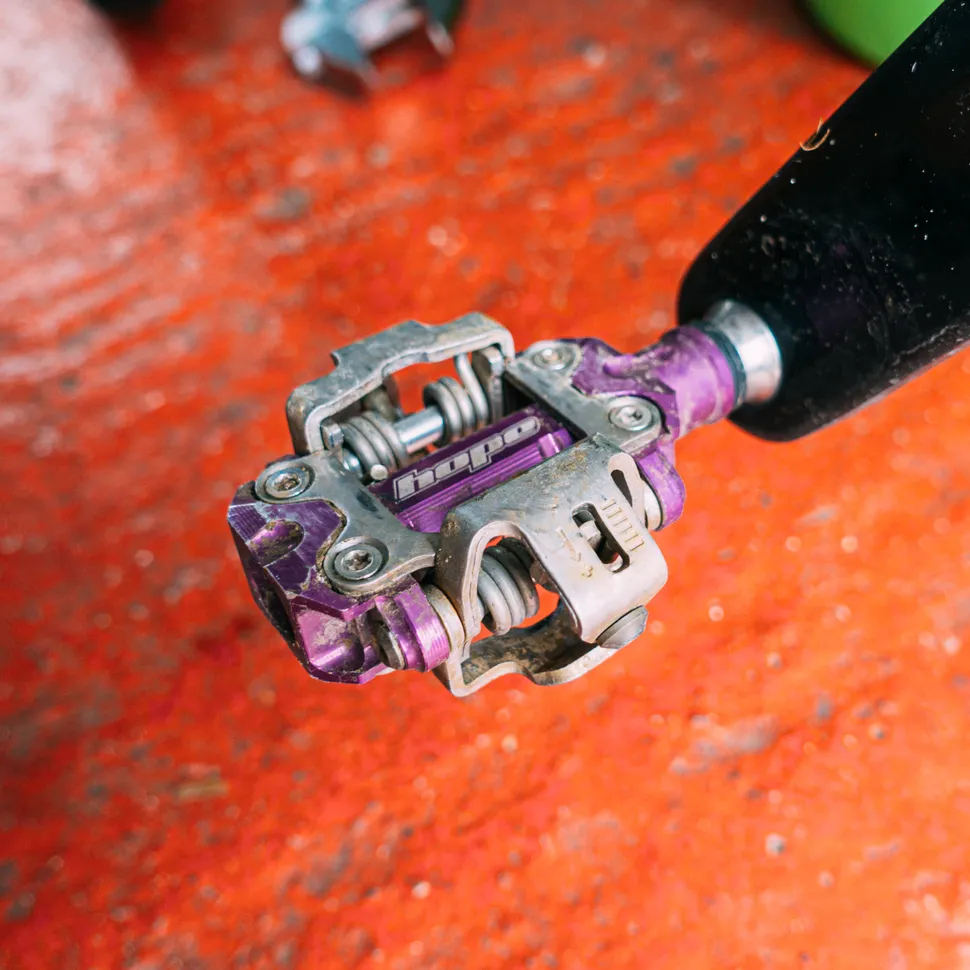
➕ Different float cleats in the box
➕ Beautiful machining
➖ Expensive
➖ Heavier than XTR
Hope is best known for its quality CNC-machined hubs and brakes and the Union RC pedals are no different, beautifully made and anodised in a range of bright colours. The cleat dual sprung jaw mechanism is similar to Crankbrothers and uses a proprietary cleat. Two sets of cleats come in the box, offering different floats and release angles, and adjusting the release tension is very easy. The downside is the high price, especially considering they are heavier than the cheaper XTR option.
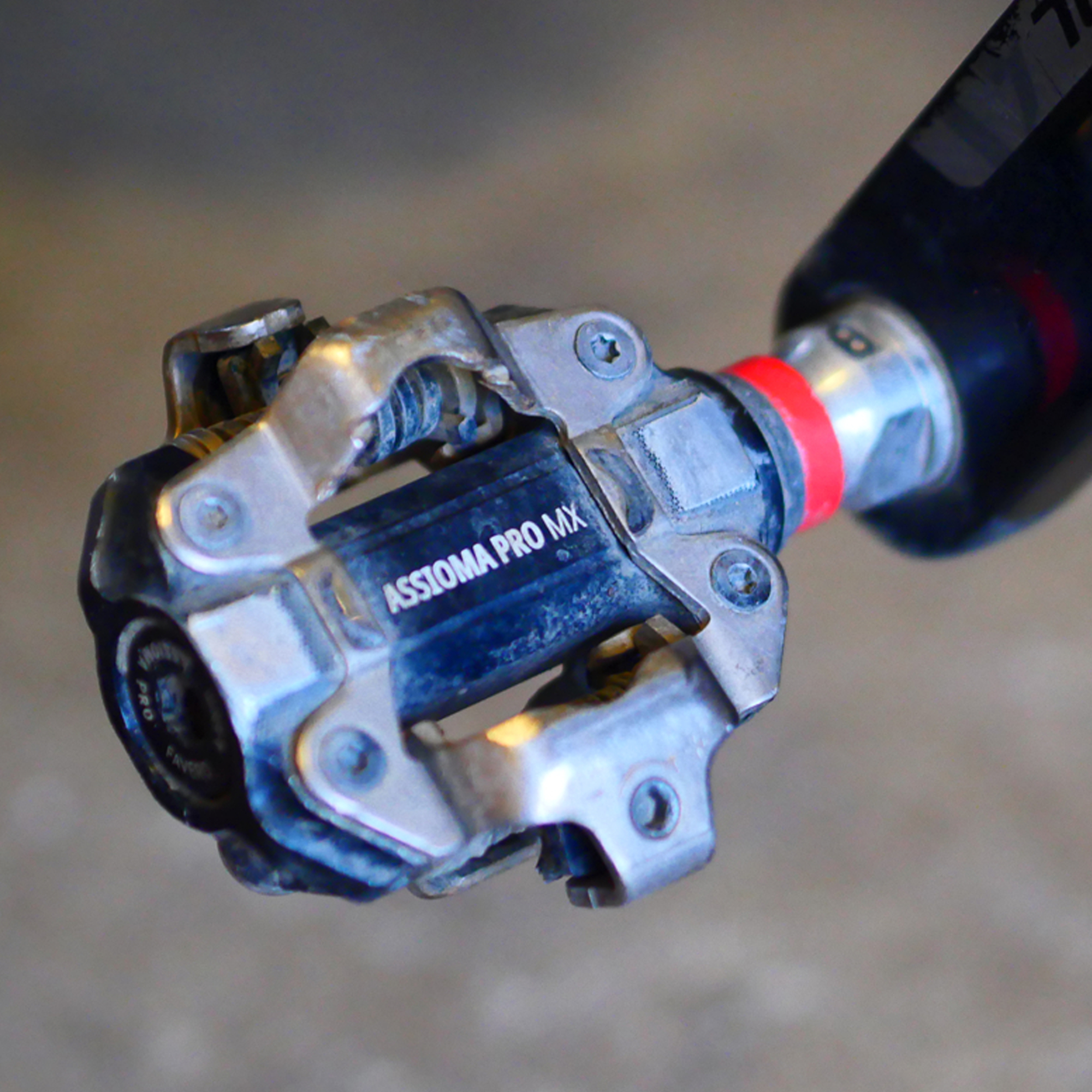
➕ Affordable power meter
➕ Internal rechargeable battery
➖ Engagement isn't as secure as Shimano
Favero Assioma Pro MX is a great entry point to riding with power on your gravel bike. Available in either single-sided or dual-sided options, Favero seals all the electronics neatly inside the axle but still achieves a low stack height of 11.2mm. Data accuracy has been impressive during testing and the pedals can measure additional pedalling dynamics too. The rechargeable battery means you don't need to mess around with batteries and has around 60 hours of battery life.
Last updated 29th September 2025
The guide was updated, ensuring that all the clipless road and off-road pedals are current and available and adding links to our latest reviews. A How to Choose section has been added with everything you need to consider when choosing the best clipless pedals for your riding.
How to choose the best clipless pedals for you
Here are the key considerations when choosing the best clipless pedals for your needs:
- Will I ride on the road or off? Typically, road riders choose three-bolt style pedals and gravel riders and cyclocross racers will choose two-bolt designs.
- Will I walk in my shoes much? The choice above may be different if you're commuting or walking in your shoes, when you might choose a two-bolt style rather than a three-bolt. Conversely, gravel racers might choose a three-bolt style.
- How much adjustability do I want? Shimano and Look Keo 2 Max road pedals offer more adjustment that's easier to make than Time, Look Keo Blade or Speedplay road pedals. Shimano SPD-style off-road pedals adjust more than Crankbrothers, Time Atac or Hope.
- How much do I want to spend? You can get the same pedal system at a wide range of prices. More expensive pedals are generally lighter and may be better finished.
Everything you need to know about the best clipless pedals
What are clipless pedals?
Paradoxically, clipless pedals are pedals which you clip into. A mechanism on the pedal clips into a cleat which is fitted to the sole of your shoe, securing your feet in place.
The term "clipless" originated in the 1980s when this technology was developed for racing cyclists as a replacement for toe clips, which worked with adjustable straps that secured the foot to the pedal.
What are the different types of pedals/shoes?
There are two main types of clipless pedal and shoe systems: road and mountain bike or recessed and non-recessed cleats. While various manufacturers produce them, nearly all fall into these categories. Each system uses a cleat that attaches to the shoe, with most shoes designed for only one type, though some can accommodate both.
MTB Pedals & Shoes (Shimano SPD, Crankbrothers) – Use a 2-bolt metal cleat recessed into the sole for easier walking. These shoes often have treaded soles for added grip.
Road Pedals & Shoes (Shimano SPD-SL, Look, Time, Speedplay) – Use a 3-bolt plastic cleat that protrudes from the sole, making walking difficult. These shoes are lightweight, rigid, and designed for maximum power transfer.
If you want the full breakdown, check out our guide to cycling with cleats here.
Below, I've highlighted the key differences between each brand's clipless pedals and some key considerations when choosing:
Shimano three-bolt pedals
Shimano is perhaps the default choice. All its pedals use a similar design with a rear retainer that's tensioned by a coil spring. The pedal release tension is changed via a hex bolt in the top of the retainer, with an indicator window to show you the release tension you have set.
Shimano cleats are wide, providing a broad contact area with the pedal, although the wide cleat can overhang the sole of narrower or smaller shoes. There are three cleat options with 0, 2 or 6 degrees of float.
Look three bolt pedals
Look developed the original clipless pedal system. Look cleats are slightly smaller than Shimano's and it too offer three options with 0, 4.5 and 9 degrees of float.
Look's lower-priced Keo 2 pedals use a similar retainer with a coil spring to Shimano (it licensed the technology to Shimano in the 1990s). Its higher-priced pedals, named Keo Blade, use a carbon leaf spring on the underside of the pedal body to tension the retainer; the brand brought out an updated pedal body in January 2024, which it claims makes the Keo Blade the most aero pedal available.
While the coil spring allows the release tension for Look's cheaper pedals to be continuously varied, the Keo Blade pedals' release tension is changed in discrete jumps by swapping the leaf spring, of which there are four different tensions available.
Time three-bolt pedals
Time is another brand which—like Speedplay—is seeing a renaissance under a new owner, in this case SRAM.
All Time's pedals use a carbon leaf spring to operate the rear retainer and, as with Look Keo Blade pedals, you can swap the spring to change the release tension by discrete increments. Time's system holds the retainer open when the cleat is not engaged, making it easier to clip in.
Time has two road bike pedal ranges. The cheapest is the Xpresso, which has one composite-bodied and one carbon option. Step up to the Xpro and there are three carbon models.
The top-spec Time Xpro 12 SL pedals have a titanium axle and ceramic bearings. Their claimed weight of 174g per pair makes them the lightest pedal option available, although at a price.
Speedplay three-bolt pedals
The final major road-going option is Speedplay. Wahoo updated and relaunched Speedplay pedals and added the Wahoo Powrlink Zero power meter pedals (now renamed Speedplay Power) to its portfolio.
Technically, Speedplay cleats are fixed to the shoe's sole with four bolts, but there is an adapter to allow them to be used with the more common three-bolt drilled road cycling shoes.
Speedplay pedals are unique among pedals for three-bolt cleats in allowing dual-sided entry (except the Speedplay Aero model) and having continuously variable float and release angles, although, unlike other systems, release tension cannot be varied. Also unique to Speedplay, the adjustability is in the cleat, with the pedal just offering a fixed retaining surface.
Shimano SPD two-bolt pedals
Shimano is also one of the go-to pedal options off-road, whether riding gravel or mountain biking.
Shimano offers three cleat options: the default SH51 cleat is included within the box with most pedals and offers 4 degrees of float and a single release action. Alternatively, Shimano has the SH56 cleat that offers a multi-directional release for riders who want to be able to easily unclip and the latest MT001, which provides multi-directional clipping in action, making it easier to clip back in on technical terrain.
Crankbrothers two-bolt pedals
Crankbrothers' clipless pedals are the other big player off-road and are a little different from Shimano's SPD system. The front and rear jaws are both sprung, which gives more options to engage the cleat into the mechanism while riding on rough terrain, as you can drag the cleat forward, backwards or stamp down onto the pedal.
In their most skeletal Eggbeater form, they have a minimalist design with four points of engagement, shedding mud easily and making them popular for cyclocross. Crankbrothers uses the same retention system, but with a platform in its Mallet and Candy pedals, adding some extra foot stability. The release tension is not adjustable, although you can change the float and release angle by changing your cleats.
Time two-bolt pedals
As well as its road pedals, Time sells an off-road pedal system. Again, it's available with a range of different platform sizes. Its ATAC XC pedals were used for cyclocross by Wout van Aert for many years before he transitioned to road racing.
The sprung retainer is at the front of the ATAC pedal system rather than the rear, which Time claims assists in clearing debris from the pedal-cleat interface as you clip in. Its release tension is non-adjustable, although you can buy lighter release cleats. You can change the float for standard release cleats by swapping your left and right cleats with each other.
Hope two-bolt pedals
Hope is a bit of an outlier in the off-road pedal market, using its own cleat design and a unique mechanism that looks like the SPD system but uses a dual-sprung mechanism similar to Crankbrothers but which offers spring tension adjustment to fine-tune release force. Float can be adjusted between 4 and 5 degrees by switching the cleats and Hope includes both sets in the box the pedals. We have featured the lightweight Union RC version, but Hope also does a couple of platform models for mountain biking.
Can I use clipless road pedals off-road?
Yes, however, there are some rides where using road cleats could cause issues. As road cleats aren't recessed, they are hard to walk in and are prone to clogging with mud or rocks. The cleats are also generally made from plastic and risk being damaged when walking on rough surfaces. Road shoes aren't as robust as gravel shoes either, so there is a greater risk of damaging your shoes or sustaining foot injuries while wearing road shoes off-road.
Top gravel racing pros often opt for road bike pedals and shoes, as they rarely stop or need to walk any distance.
On the flip side, you can use off-road pedals on road without a problem, although the shoe and pedal systems will add a little extra weight and don't offer the same ultra-stable pedalling platform.
How we test the best clipless pedals
For this guide, we tested a whopping 17 clipless pedals that span both on-road and off-road cycling. To provide a well-rounded and varied view of what's available on the market, we tested multiple pedals from the leading manufacturers.
Testing pedals revolves around two factors, set-up and riding. Set-up is a fairly simple process of determining the range of adjustability and taking note of the real-world specs, such as weight and platform size. The riding portion focuses on how easy it is to engage and disengage from the pedals, shoe stability and power delivery.
As you already know, testing is the backbone of the tech department at Cyclingnews and we take it seriously. Find out more on how we test here.
The latest race content, interviews, features, reviews and expert buying guides, direct to your inbox!
Paul has been on two wheels since he was in his teens and he's spent much of the time since writing about bikes and the associated tech. He's a road cyclist at heart but his adventurous curiosity means Paul has been riding gravel since well before it was cool, adapting his cyclo-cross bike to ride all-day off-road epics and putting road kit to the ultimate test along the way. Paul has contributed to Cyclingnews' tech coverage for a few years, helping to maintain the freshness of our buying guides and deals content, as well as writing a number of our voucher code pages.
